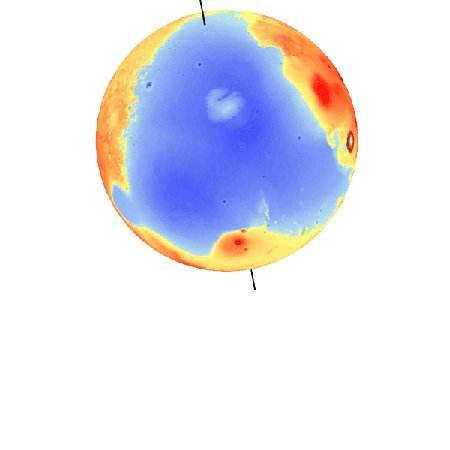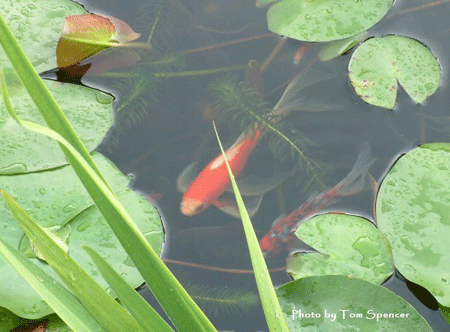Research and discussion topics
Introduction
The news story suggests lots of interesting topics for discussion and research.
Take a look at those we've picked out from the text. Compare ours with those you found using the methods in Getting the topics.
In groups discuss the differences. This isn't about right or wrong. Your choice is as good as ours as long as you can explain and defend it.
Now have a go at some of the topics - ours or yours.
Selected topics
This may well be the closest to the present that liquid water flowed on Mars.
"You never end up with a pond you can put goldfish in," Schon said. "But you have transient melt water.
During this ice-age, ice from the poles moved towards the equator and settled in mid-latitudes.
But by zooming in with the HiRISE camera aboard the Mars Reconnaissance Orbiter ...
Next came the task of trying to date these.
This means its axis was tilted so the winter half got very little sunlight
Want more?
| It includes both an interactive and a printable version of the water cycle and the concept of a water table. |
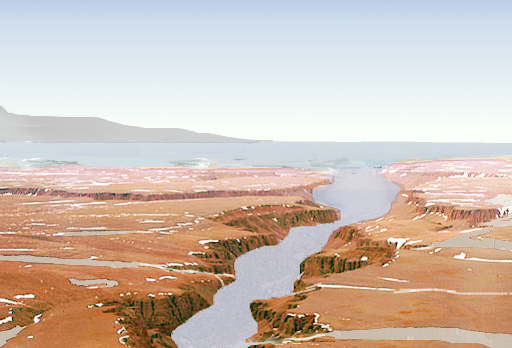
This may well be the closest to the present that liquid water flowed on Mars.
Liquid water flows on Earth all the time. Do some research to investigate the water cycle on Earth. In your groups prepare and deliver a short presentation on it.
If the whole idea of a water cycle is new to you, you could start with Learn about the water cycle from Pond World.
UCAR has a nice explanation of what it's all about, divided into beginner, intermediate and advanced. Start with the beginner story then move on to the others.
Take a look at the flash interactive on the hydrologic cycle (just a fancy name for the water cycle) at Teachers' Domain. Notice the different steps in the cycle.
You might like to use the animation from NASA and put a soundtrack on it explaining what's happening at each stage.
You can find more at the Met office "The water cycle is the process by which water travels from the Earth's surface to the atosphere and then back to the ground again. It is a constant process with the same water going through the cycle over and over again."
Finally here are some fun facts about water.
You never end up with a pond you can put goldfish in. But you have transient melt water.
Now let's build on the last activity. In your groups you're going to learn about the water cycle on Mars, if there is one, and compare it with the water cycle here on Earth.
The big difference between the two planets is that Earth is wet - especially the west of Scotland, which is where I'm writing this now.
It's pouring with rain outside my window. The frogs in my small garden pond are loving it. But I'm not so keen. I have a leak in my roof and I'm catching the water in a bucket. So every few seconds there's a splash as the next drip falls. Not loud but worrying.
I wouldn't have this problem on Mars because there seems to be no running water on the surface of Mars today (again look at the beginner, intermediate and advanced versions and take what you can from them).
There is evidence for running water in the past, though, including river channels. There are also frozen, icy polar caps.
Take a look at the two theories scientists have for what happened to water on Mars
One of these is a water cycle. Draw a simple diagram for this one.
Make a list of all the things in this cycle that are the same as the water cycle on Earth and another list of the things that are different.
Take a look at these and try to answer this question: What is the main reason for these differences?
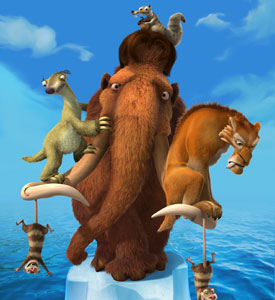
During this ice-age, ice from the poles moved towards the equator and settled in mid-latitudes.
Take a look at what it was like on Earth during the ice-age, using the Creswell Crags website. Explore it a little. Try to answer this question: Could you have survived during the ice-age? What makes you think so, or think not?
Now take a look at this activity from the Scottish Earth Science Forum. Show it to your teacher. Build a timeline of the ice-age on Arthur's Seat in Edinburgh.
"The sea, a deep blue in the distance, is glittering with reflected sun. A breeze wafts over you carrying the scents of the forest. Underfoot it is mossy and grassy. Small flowering shrubs nestle in crannies, and heathers and feathery-headed plants shimmer gently in the breeze. As you walk about you sink into beds of crowberry, squashing its blue-black berries underfoot. There are lush mixed forests everywhere."
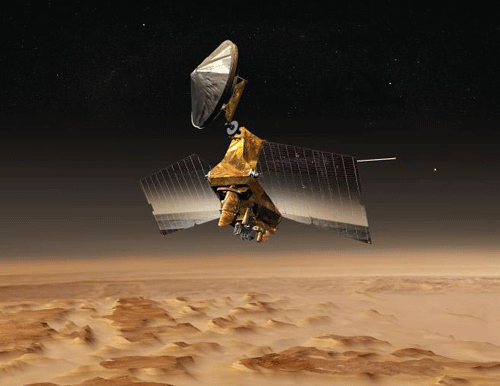 mars-splosh.jpg
mars-splosh.jpg
But by zooming in with the HiRISE camera aboard the Mars Reconnaissance Orbiter ...
Some wonderful images of Mars have been taken by the HiRISE camera (It stands for high resolution imaging science experiment.)
Some of these are in 3-D so to get the full effect you need 3-D glasses. You can buy these cheaply. But a nice project is to make your own in class. Here's how.
Once you have your 3-D glasses take a look at the 3-D images of Mars. What do you think? Almost feels like you can touch the surface of the Red Planet, doesn't it?
You may have used Google Earth in your geography classes - or just to look at your own house. Well the HiRISE team has got together with Google to produce Google Mars. Here's how you can explore Mars from your own computer.
Finally take a look at the images of Promethei terra, where these latest discoveries have been made.
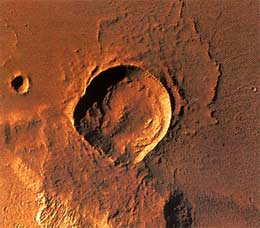
Next came the task of trying to date these.
Petal, pancake and splosh. Sounds like a variety act or a firm of solicitors, doesn't it? Actually these are names given to different types of crater on Mars. Find out about these different types of crater and sketch them.
Try to answer these questions, using what you can understand from the text, the link in the last paragraph and this one:
What does the size of a crater tell us about its age - and why does it tell us this?
Do any of the craters on Mars tell us anything about water on its surface?
This means its axis was tilted so the winter half got very little sunlight
The reason for the seasons here on Earth is quite complicated and almost impossible to explain without a model.
We used to have to make these models in the classroom, but nowadays there are animations that can the job almost as well.
Take a look at this one. Play around with it first without clicking on Show Earth Profile.
The spin of the earth on its axis gives us day and night. One spin right around takes 24 hours.
The motion of the earth around the sun lasts a year. Notice the angle of the spin axis and how it always points in the same direction, no matter where the earth is in its orbit. This is what gives the seasons. How?
Well if you've played around with the animation for a while with Show Earth Profile off, turn it on and play it again. Notice what happens in particular at the solstices and equinoxes.
What are these? Well at the equinoxes, the day and night are 12 hours long everywhere on earth. These are the only two days of the year when this happens. Study the images, talk about it in your groups and try to explain why day and night are the same length everywhere at an equinox.
Now look at the solstices in June and December. These are mid-summer and mid-winter if you are in the northern hemisphere and the other way round if you're in the southern. In your groups try to answer this question. Why does the northern hemisphere get much more sun than the southern hemisphere at the June solstice?
There are two reasons. See if you can find both.
Want more?
1. Water cycle, writing and debating activities.
2.How to read a scientific paper one and two.
3. Mars for kids.
4. Mars movie
5. Is There Liquid Water On Mars?
Purpose: To have students analyze actual data and images to assess whether there is liquid water on Mars
Is there really life on Mars? Was there once cellular material on the red planet? Scientists have been studying these questions for a long time, and now they have some new information that may give some clues. Scientifically speaking, to study the controversy about life on Mars, it is important to understand what the work of scientists is all about. How do scientists develop a theory like life exists on Mars?


